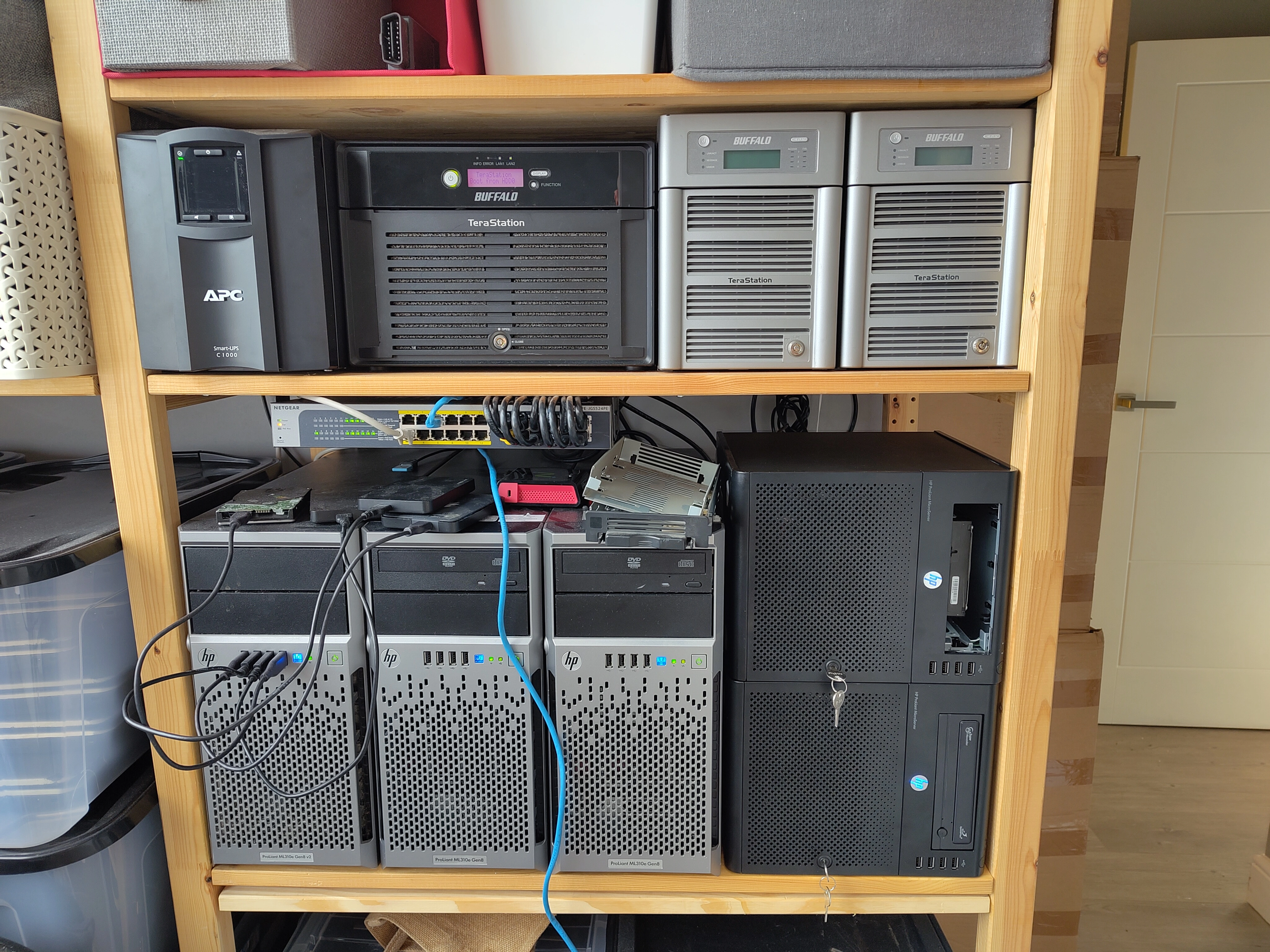

No. Yes. Kind of.
My home setup is three ProLiant towers in a ProxMox cluster. One box handles all-the-time stuff like OpenWRT, file server, email, backups, and - crucially - Home Assistant and is UPS protected because of how important it’s jobs are. The other two are powered up based on energy costs; Home Assistant turns them on for the cheapest six hours of the day or when energy costs are negative and they perform intensive things like sailing the high seas, preemptive video transcoding, BOINC workloads and such. The other boxes in the photo are also on all the time basically being used as disk enclosures for the file server and they are full of mismatched hard disks that spend virtually all their time asleep. At rest the whole setup pulls about 35-40W.






I think Hoyle needs to up the Lancastrian. He’s got the accent in spades, but he needs to start turning up in a flat cap and with a whippet.